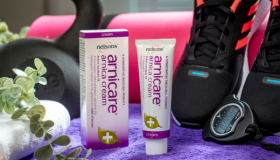What is a bruise?
A bruise is often caused by a bump, knock or fall.
Bruises usually occur when an injury causes blood to leak into the skin or tissues beneath the skin. So what can make bruises so unsightly? Well, with nowhere to go, the blood gets trapped under the skin, forming a red or purplish mark which may be painful or feel tender to touch.
Stages of a bruise
Minor mishaps are often unavoidable. From a small bump in the home to a trip or fall while out and about, bruises happen. Especially when you or your children play sports. Nelsons® Arnicare® Arnica Cream can be applied to the affected area straight after the knock or fall to help minimise bruising.






 United States
United States